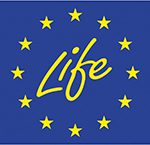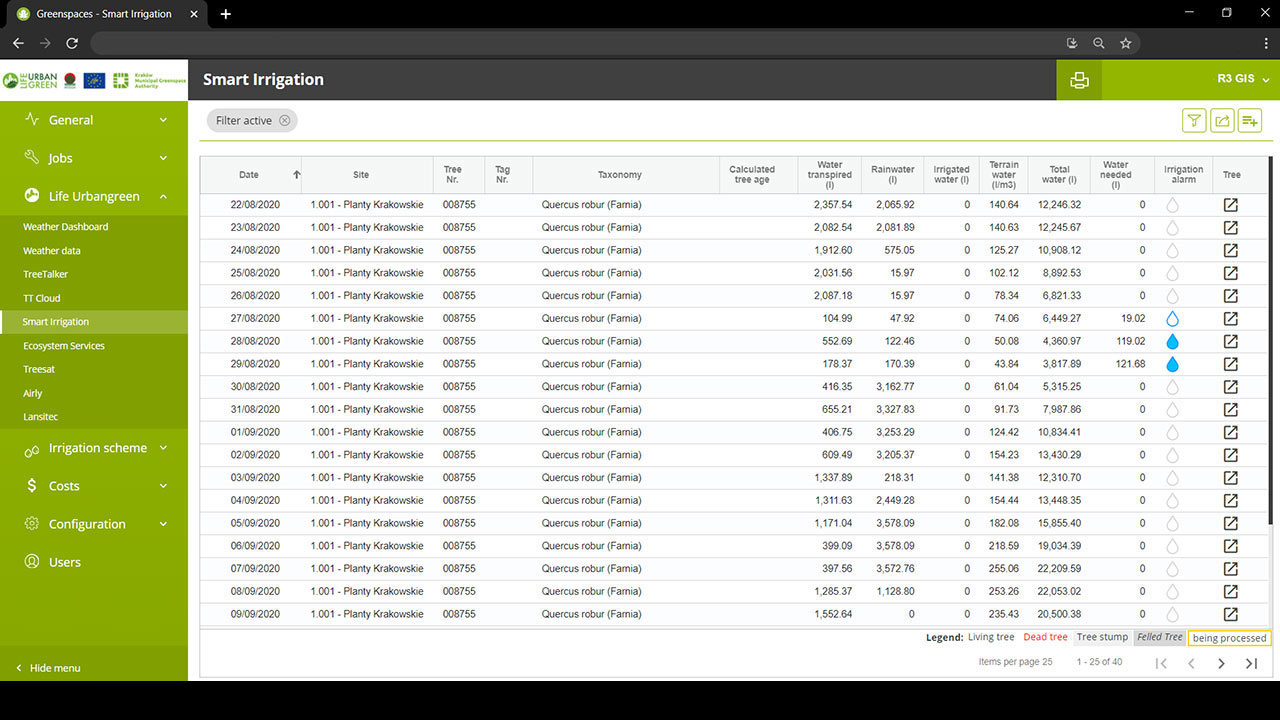What trees tell us
The cities of Rimini (Italy) and Krakow (Poland) analyzed nearly 90,000 of their urban trees by comparing location, species and age, ability to absorb climate-damaging CO2, and the amount of atmospheric particulate matter filtered by their leaves. Now the data – updated in real time per day and per year – on these ecosystem services is online.
The project is called LIFE URBANGREEN and aims at making the value of urban green spaces visible to citizens and increase efficiency of maintenance activities. The benefits that are being studied and quantified include the amount of particulate matter that trees filter out of the air and the amount of climate-damaging CO2 that is removed from the atmosphere. Cooling of the air in hot summer days by trees through transpiration and shading is also quantified and expressed in kWh of energy saved for cooling the same amount of air with an air conditioner. In Rimini 26,534 trees were analyzed for the services they provide to the city, in Krakow a total of 60,828 trees. The data is now available on a public portal. It is one of the first portals of its kind in Europe, as it not only shows the location of the surveyed trees, but also the added value these trees represent for citizens and the urban environment.
Portal content
On the website, people will be able to find the following information:
(1) A description of public green spaces with main characteristics: trees, accessibility, presence of dog areas, drinking fountains, benches, play or sports equipment, public toilets.
(2) A brief description of the ten most common tree species analyzed in Rimini and Krakow, respectively. Three speciesout of ten are the same for both cities so that data can be compared across climate zones.
(3) The exact number of trees in the two cities is calculated for each tree species. The most common tree species in Rimini is the London plane (Platanus × acerifolia), while in Krakow it is the Norway maple (Acer platanoides).
(4) A ranking of the ten tree species based on the studied ecosystem services. For example, the oak tree has the highest score for CO2 assimilation and air cooling, 10 points out of 10, while the white dogwood has only 1 point out of 10.
(5) A city map showing the location of major green areas with trees of the ten species studied.
How the portal works
Select an avenue or a park in Rimini or Krakow, click with the mouse pointer on a specific tree. The name, species, and size of the tree are displayed as well as the ecosystem services provided on a given day or year for the species studied. This way it is possible to visit the Tiberius Bridge, a symbol of Rimini, and at the same time read on the smartphone how much the city’s trees right next to that place contribute to air quality and climate protection. This information is available because in the last three years the two technological and scientific partners of the LIFE URBANGREEN project – ProGea 4D from Krakow and the University of Milan – have measured, counted and studied all these trees. The surface of individual leaves was studied, the size of all leaves was measured and, based on this, the volume of the whole tree was calculated. The company R3GIS programmed the corresponding algorithms.
LIFE URBANGREEN as a model
The public portal of the cities of Krakow and Rimini are part of a pilot project and are the first websites of this type developed in Europe. It is an attempt to make the ecosystem services provided by urban trees visible and to clearly state the importance of green spaces for climate change adaptation.
Portal of the City of Rimini in Italian: https://rimini.
Portal of the City of Krakow in English and Polish: https://krakow.







